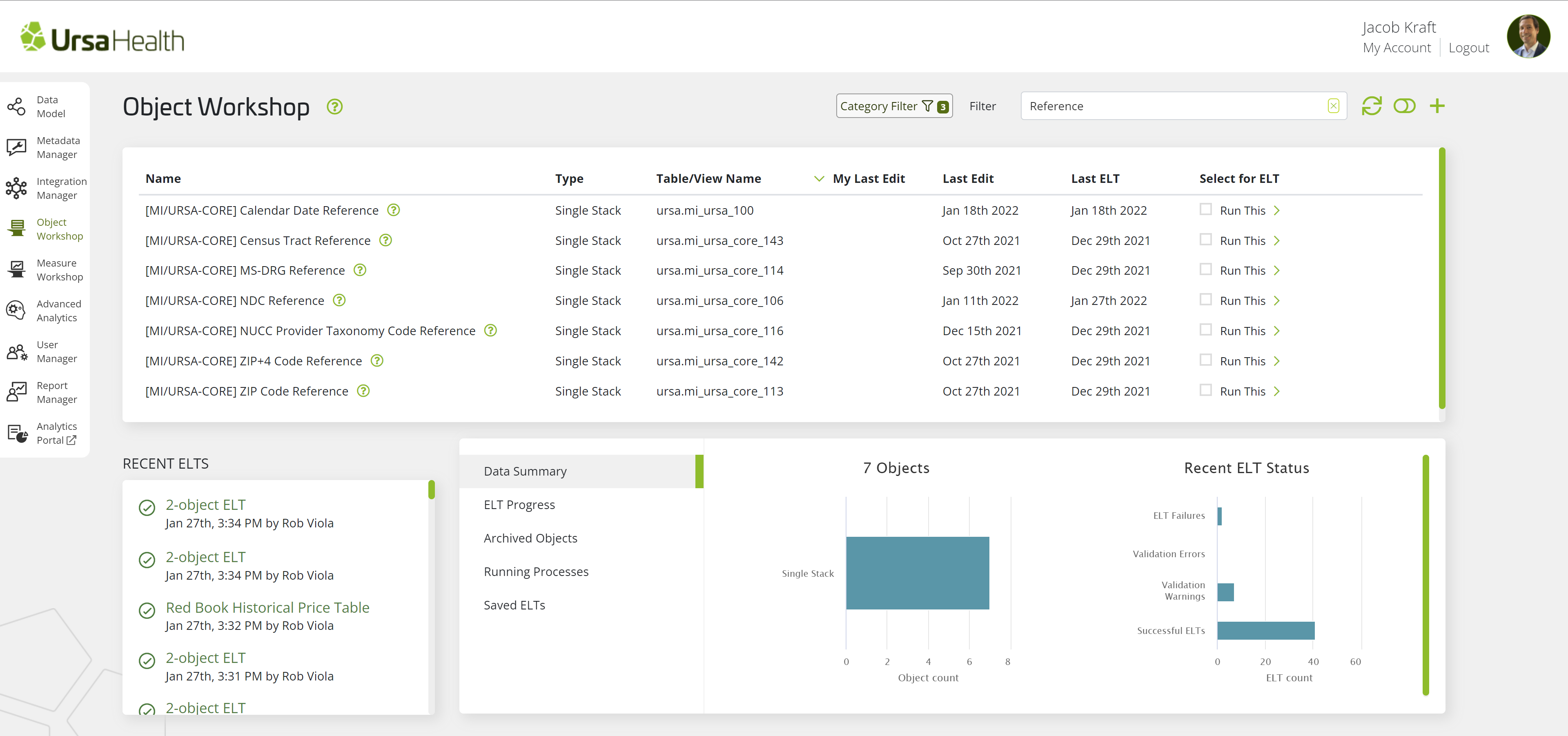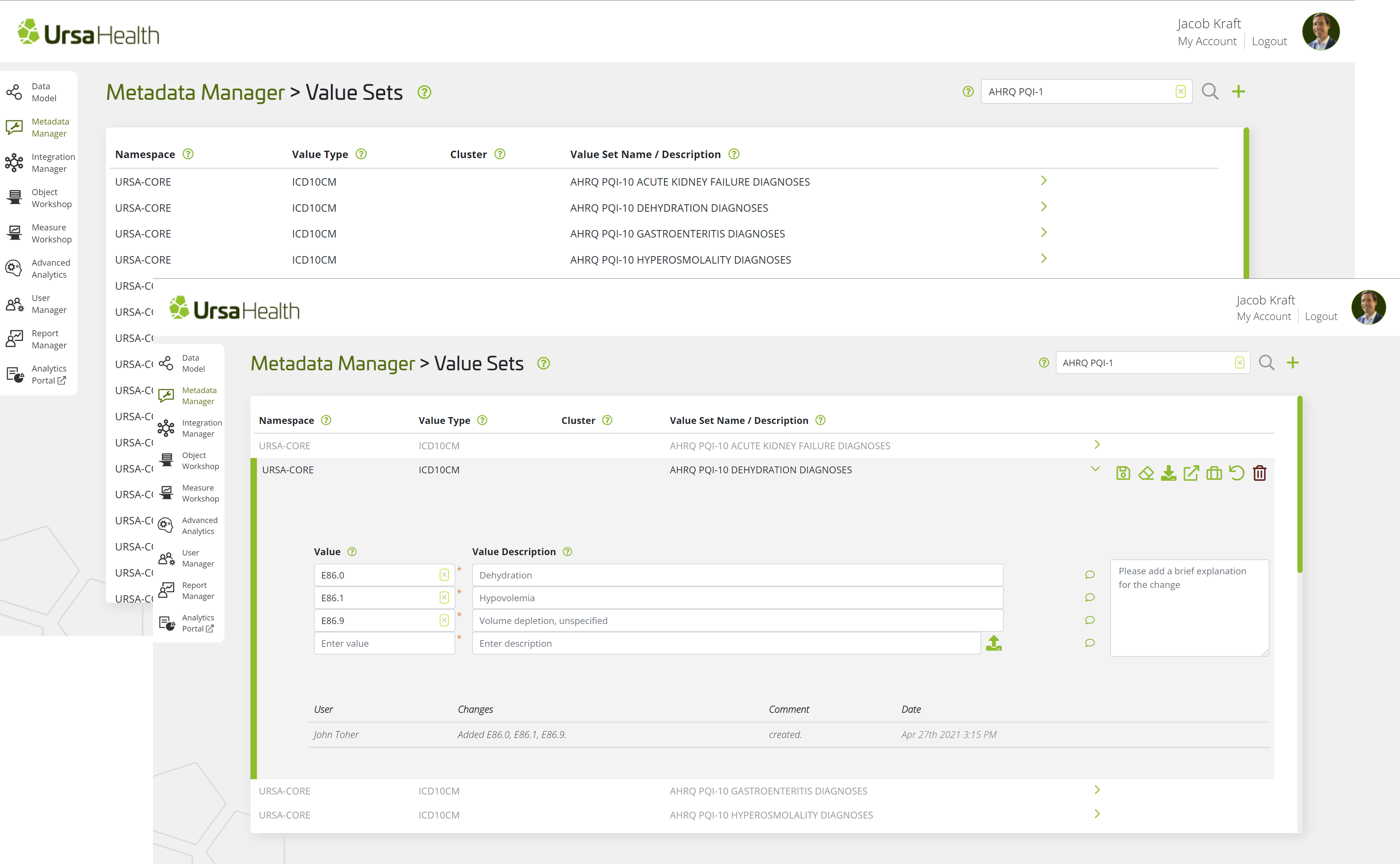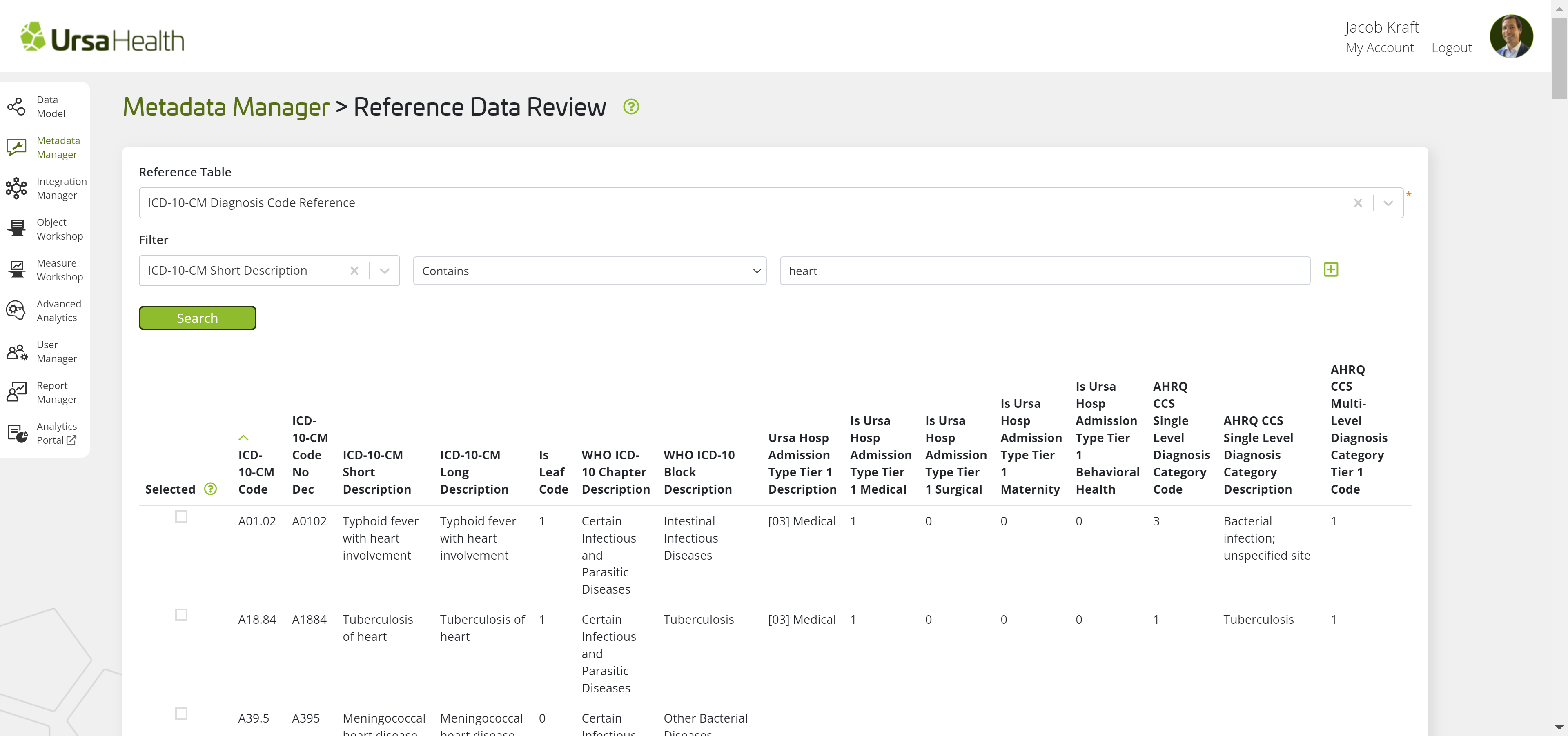
Healthcare reference library
For over a decade, Ursa Health experts have been cleaning, interpreting, and analyzing healthcare data to answer the questions of leading U.S. employers, health systems, and health plans. In the course of building our analytics development platform, we created the Ursa Health Reference Library, a meticulously curated blend of content and features designed to save you time during the iteration process — and a standard component of the platform.
It all starts here
Ursa Health has synthesized international code sets, best-in-class third-party resources, and its own proprietary intelligence to create a set of look-up tables that are vital ingredients for enriching healthcare’s data ontologies. No need for you to do any research, acquire any additional licenses, or perform any new set-up — we do all the painstaking compilation and maintenance of this valuable healthcare reference material for you. So instead of working with an indecipherable 11-digit NDC pharmacy code, for example, you’re viewing drug names, the way each maps to a therapeutic class of drugs, average pricing, and more.
Reference tables can be used to add descriptive fields to raw data code fields, create custom value sets based on your internal business logic, and interpret complex data sets.

You gain immediate value

Visibility is key
With our Reference Data Review feature, you can look over the data of eligible reference tables used by Ursa Studio. Then, with just a few clicks, you can build new value sets from the starting tables.
Users can also jump to the Reference Data Review screen from within an existing value set to both investigate and edit the contents of the value set.
Reference data objects can be linked to other objects in Ursa Studio for data modeling purposes.

Want to learn more about Ursa Studio?
We've got more to tell you. Use any of the following links to learn more about our:
- Healthcare data integration
- Healthcare data model modeling
- Healthcare analytics development
- Healthcare business intelligence
- Healthcare reference library
- Master data management
- Native ELT / Interoperability
- Security